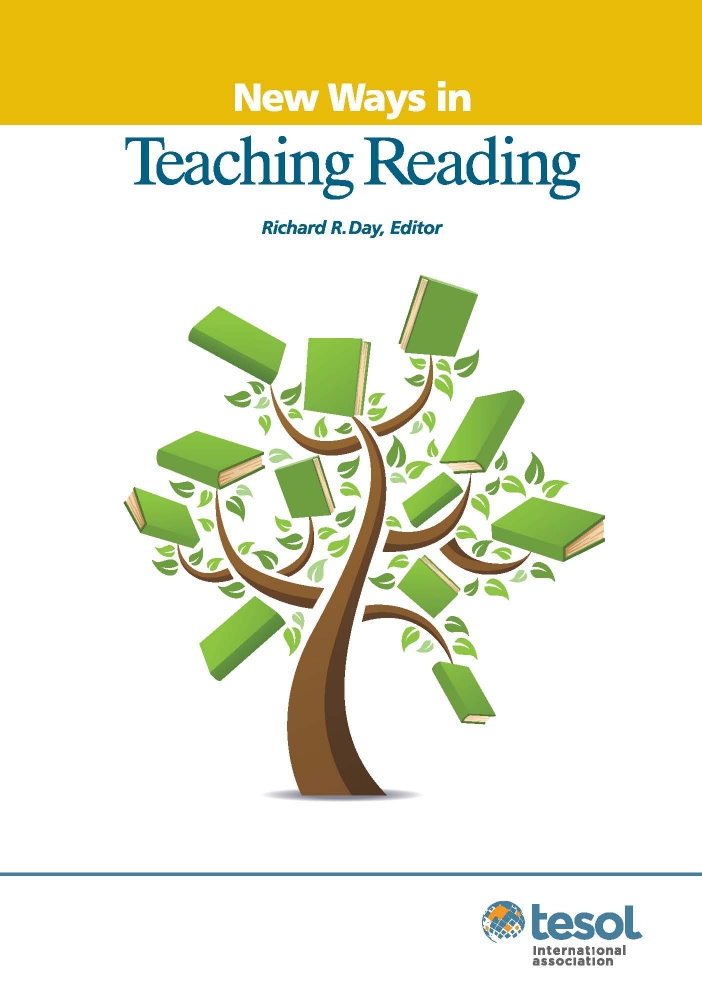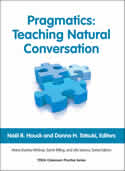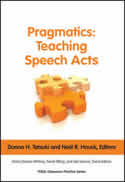Free TESOL Quarterly Article
This article first appeared in TESOL Quarterly, Volume 46, Number 2, pgs. 334–361. Subscribers can access all issues for free here. TESOL members can subscribe to TESOL Quarterly here. To become a member of TESOL, please click here, and to purchase articles, please visit Wiley-Blackwell. © TESOL International Association.
|
Abstract
This article describes a study examining the effects of Sheltered Instruction Observation Protocol (SIOP) model instruction on the academic language performance of middle and high school English language learners. The SIOP model is an approach for teaching content curriculum to students learning through a new language. Teachers employ techniques that make the content concepts accessible and also develop students' skills in the new language. Using a quasi-experimental design, the research was conducted in content area and English as a second language classes in two districts in northern New Jersey over 2 years. The analysis presents student achievement data from state-mandated language proficiency tests in the final year of the intervention, after most of the treatment teachers had completed their professional development in the SIOP model. There were statistically significant differences in the average mean scores in favor of the treatment student group on Writing, Oral Language, and Total English scores of the IDEA Language Proficiency Tests with small to medium effect sizes. The results from this study show that the SIOP model offers a promising approach to professional development that can improve the quality of instruction to English language learners and increase their English language achievement. |
Methods for second language education across the globe have adapted over time to deepen and broaden a learner's ability to use a new language. The deepening has sought to advance proficiency, and the broadening has added academic and other goals to social language abilities. Many changes have been derived from learner needs and interests as well as educators' explorations of better ways to teach. In the United States, however, another source for change is present. The educational reform movement, a political construct rather than a learner need, has had a direct impact on English language learner (ELL) education. States now implement high-stakes testing and standards-based instruction for all students, regardless of their proficiency in English. Classroom instruction is guided by mandated standards of proficiency for core subjects such as mathematics, science, and social studies, but in many content classes little or no accommodation is made for the specific language development needs of ELLs. This lack of accommodation raises a significant barrier to success, because ELLs are expected to achieve high academic standards in English and, in many states, must pass end-of-course tests or high school exit exams in order to graduate.
Unfortunately, ELLs in elementary and secondary schools have experienced persistent underachievement on the high-stakes accountability measures enacted as a result of the No Child Left Behind (NCLB) legislation passed by Congress. This legislation requires states to assess ELLs in English language proficiency annually; in mathematics and reading each year in Grades 3-8 and once in high school; and in science once in elementary, middle, and high school. As a result, a seventh-grade beginning-level ELL who has been in the United States for 1 year would take the same mathematics test in English as a seventh-grade native English speaker who has been in U.S. schools all his or her life. On nearly every measure of state and national assessments, ELLs lag behind their native-English-speaking peers and demonstrate significant achievement gaps (Kindler, 2002; Kober et al., 2006; National Center for Education Statistics,2009a, 2009b; Reardon & Galindo, 2009). These results are not unexpected, because most ELLs must take subject area tests using English before they are proficient in the new language.
Because these testing practices are unlikely to end soon, interventions for addressing the ELL performance gap are needed. One strategy is targeted teacher development, so that the resulting instruction provides ELLs with access to the core curriculum and concurrently develops their academic English proficiency in relation to that curriculum. The practice of integrating language development with techniques to make curricular topics more comprehensible to ELLs is generally known as sheltered instruction in the United States; this is when the main focus is on a specific subject curriculum and the instructor is a content specialist. It is referred to as content-based English as a second language (ESL) when the main focus is on language learning and the instructor is a language specialist (Crandall, 1993; Short, 2006; Snow, Met, & Genesee, 1989). Content-based language instruction is applied internationally in foreign and second language settings (including postsecondary institutions) for language minority and majority students. It is similar to content and language integrated learning (CLIL), sustained content language teaching, English for specific purposes, and other labels (Lyster, 2007; Mohan, Leung, & Davison, 2001; Murphy & Stoller, 2001; Stoller, 2004). In the United States, it involves second language learners (usually minority language speakers) who are studying content in the new language (usually the majority language), which is the medium of instruction.
As methods for integrating language and content instruction have developed over the past two decades, many combinations of techniques have been applied to the delivery of sheltered instruction and content-based language instruction. The study presented in this article investigated one particular approach of sheltered instruction, known as the Sheltered Instruction Observation Protocol (SIOP) model. The SIOP model offers a system for lesson planning and delivery that incorporates best practices for teaching academic English and provides teachers with a coherent method for improving the student achievement. Teachers integrate instruction of content concepts with academic language in order to develop student skills in reading, writing, listening, and speaking. The concepts and language skills are aligned to state proficiency standards, and teachers use techniques designed to make academic topics accessible to students and to enable them to practice the use of academic language as it is employed in each subject area.
SIOP Model Development and Research
SIOP began as an observation tool for researchers to measure teachers' implementation of sheltered instruction techniques. It evolved into a lesson planning and delivery approach, known as the SIOP model, through a 7-year research study sponsored by the Center for Research on Education, Diversity and Excellence (CREDE) and funded by the U.S. Department of Education. It began in 1996 and involved teams of researchers and middle school teachers in three school districts. At that time, there was no model of sheltered instruction. Instead, teachers selected from a wide range of techniques and activities to design lessons as they chose. As a result, sheltered instruction varied widely across schools and within different classrooms in the same school.
Our goal was to create and test a model that teachers could implement with consistency and with the knowledge that doing so would improve student performance…
This article first appeared in TESOL Quarterly, 46, 334–361. For permission to use this article, please go to http://www.copyright.com/.
doi: 10.1002/tesq.20
TC Monthly Giveaway Congratulations to Kenneth Bond of New Jersey, USA, for being the winner of the May 2012 TESOL Connections Monthly Giveaway. Kenneth won a free subscription to TESOL Quarterly.
This month, enter to win a free
copy of the newly revised
New Ways in Teaching Reading
just off press!
|
 This second edition of New Ways in Teaching Readingbursts with new activities while retaining many of the features that made the first edition a best seller. This second edition of New Ways in Teaching Readingbursts with new activities while retaining many of the features that made the first edition a best seller.
The activities chosen for this edition are inspired by state-of-the art trends in teaching reading to English learners. Teachers now find numerous creative, classroom-ready activities in new and expanded categories like the Internet, Fluency, Young Readers, and Extensive Reading.
Check out the rest of the New Ways series |
Click here to enter
TESOL Blogs Check out the latest TESOL Blogs:
|
Tips on Writing Successful Conference Presentation Proposals, by Joe McVeigh
 The deadline to submit proposals for next year’s TESOL conference is June 1. Have you got your proposal ready? Here are a few tips on improving the proposals that you submit. The deadline to submit proposals for next year’s TESOL conference is June 1. Have you got your proposal ready? Here are a few tips on improving the proposals that you submit.
Begin with the end in mind
TESOL provides a copy of the proposal rating rubric in the call for proposals. Read it. What would you need to do in order to be sure that your proposal received a high score in each category? Now write your session description with the rating rubric in mind. Read More. |
|
Global Resources and Leadership Development in ESP: Use Technology Creatively!, by Kevin
 Hello ESPers worldwide! Hello ESPers worldwide!
In Japan, it really feels like spring is here. The weather is warm, the trees are green, and the birds outside my window are . . . My apologies for getting off track. It’s just the effect of spring (smile).
I wanted to get you all thinking about using technology creatively to meet the needs of your students. In addition, please remember that as technology changes, so can your programs. Read More. |
TESOL Bookstore
"You’re wearing a good sweater."
What happens when your English learners make grammatically correct, yet situationally inappropriate responses? Are you able to guide them through this important, but often neglected, area of language?
|

|

|
|
Read a FREE Chapter
Edited by Houck & Tatsuki
ISBN 9781931185707
Order #707
Members US$35.00
Nonmembers US$50.00 |
Read a FREE Chapter
Edited by Tatsuki & Houck
ISBN 9781931185677
Order #677
Members US$35.00
Nonmembers US$50.00 |
Pragmatics: Teaching Speech Acts and Pragmatics: Teaching Natural Conversation provide teachers with a range of pedagogical activities for immediate use in the classroom, as students learn turn-taking, thanking expressions, apologies, complimenting, phone openings and closings, giving advice, expressing opinions, providing feedback, and making polite refusals.
Both volumes give teachers vital support in these activities through extensive worksheets, transcripts, and answer keys.
Audio recordings for both Teaching Speech Acts and Teaching Natural Conversation can be used to enhance these activities in your classroom.
"That’s a nice sweater."
ORDER ONLINE
Or call toll free: 888-891-0041
|
 |
|
|
 |
| Lecturer of Language and Education, PK-12 Certification Track, Teachers College, Columbia University, New York, New York, USA
Lecturer, English Language Improvement Program, Ohio University, Athens, Ohio, USA
Assistant Professors of Writing, Kean University, Wenzhou, China
Associate Professors of Writing, Kean University, Wenzhou, China
Listening-Speaking Coordinator, University of Texas at Arlington - E.L.I., Dallas-Fort Worth Metroplex, Texas, USA
Instructor/Assistant to the Director, University of Texas at Arlington - E.L.I., Dallas-Fort Worth Metroplex, Texas, USA
Center Director, Cooperative Academic English Program, English as a Second Language International, China
Corporate Language Trainer, SUMIKIN-INTERCOM, INC., Japan
Want to post your open positions to Job Link? Click here.
To browse all of TESOL's job postings, check out the TESOL Career Center. |
 |
|
 |
|